Lactic acid fermented green tea is rare and hard to find, but it is recently garnering a lot of attention. In Japan, a TV program reported that it is beneficial for intestinal health and it has grown in popularity so much that supply cannot meet the demand ever since.
The “Awabancha tea” is a lacto-fermented green tea that has been made for many generations in Kamikatsu, Tokushima Prefecture.
There are two major ways in which most teas are produced. There are unfermented teas, such as green tea, and there are fermented teas, such as black tea and oolong tea. Among the fermented teas, there is a green tea called post-fermented tea in which the tea leaves are fermented by microorganisms and then matured in a unique process. The Awabancha Tea of Kamikatsu is made in such a way.
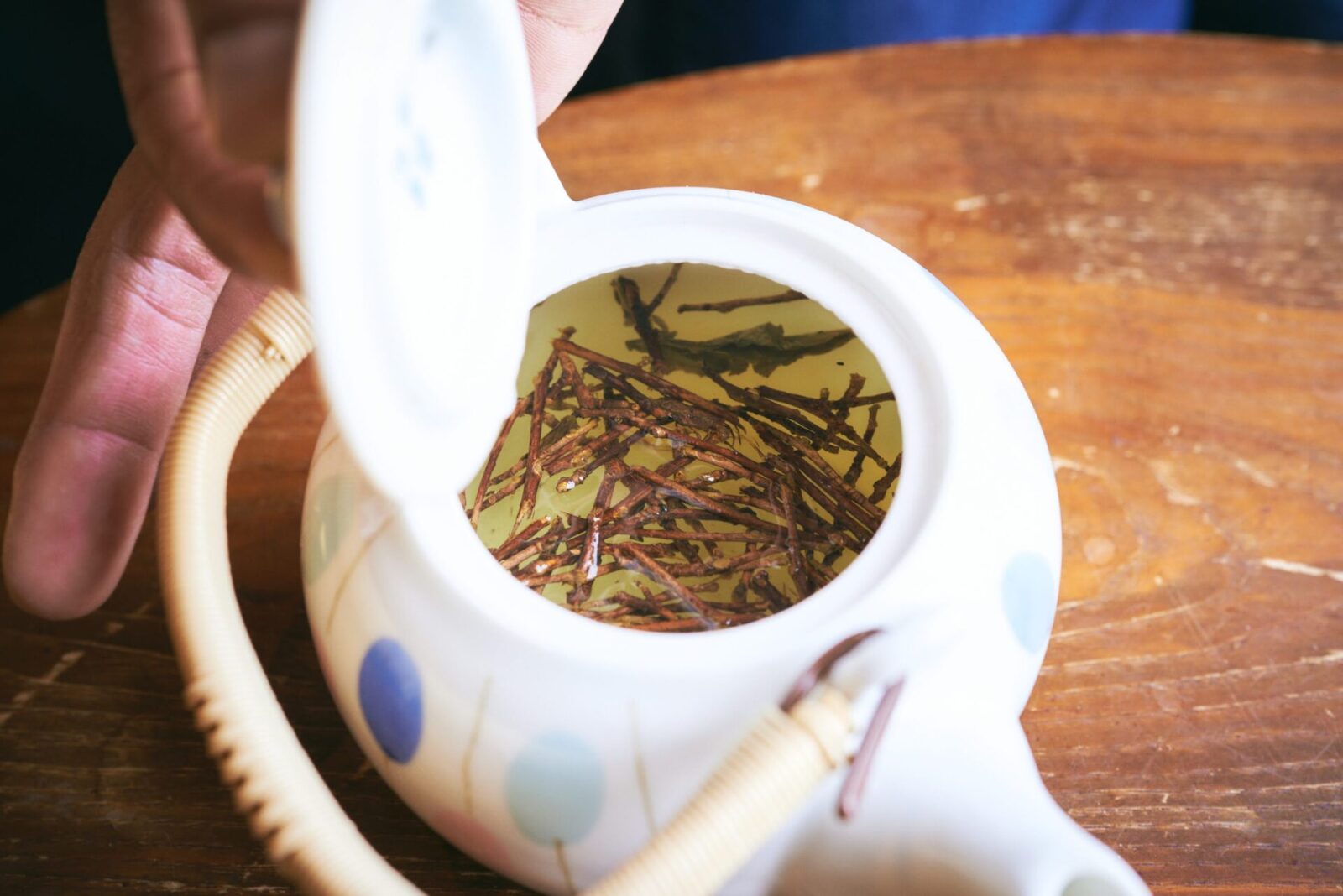
This tea has been enjoyed by many generations of farmers who drink it everyday.
Although the tea is in high demand now with orders coming from around the world, the Kamikatsu Awabancha tea is difficult to mass produce and distribute. Because of this, it is known as the “elusive tea.”
So how is lacto-fermented tea made?
What is the resolve of the producers of the Kamikatsu Awabancha Tea as they inherit and protect the production of this historic tea?
We interviewed Kamikatsu Awabancha tea farmers Takahide Bando and Hiroshige Takagi to find out.
A different famer, a different flavor
Kamikatsu Town is located in the eastern part of Tokushima Prefecture, about an hour and a half drive from the Tokushima Awaodori Airport. The town is known for its ancient forests and beautiful scenery including the terraced rice fields of Kashihara and the moss forests of Yamainutake.
A range of mountains that are 1,000 to 1,500 meters above sea level connect and overlap with the Katsuura River flowing between them. There are small towns and rice fields in the few areas of flat land in between the mountains and along the river.
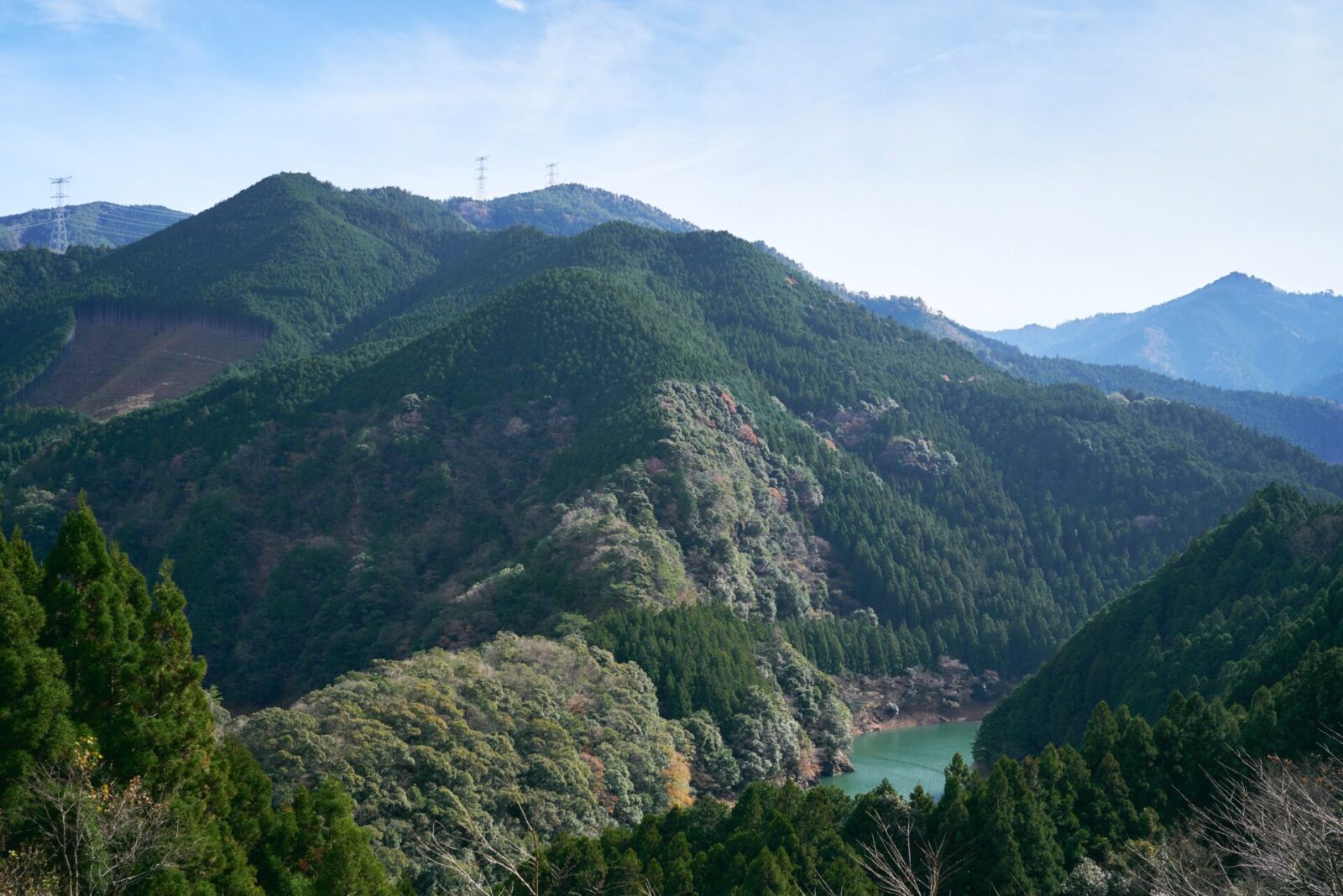
It is in this land where the Kamikatsu Awabancha Tea has been passed down through many generations.
The tea itself has a clear and golden color. When you take a sip, a refreshing sourness fills your mouth. With a soft texture and fresh aftertaste, it is a comforting and pleasant tea.
Since it has very little caffeine it can be enjoyed by everyone, including little children and the elderly.
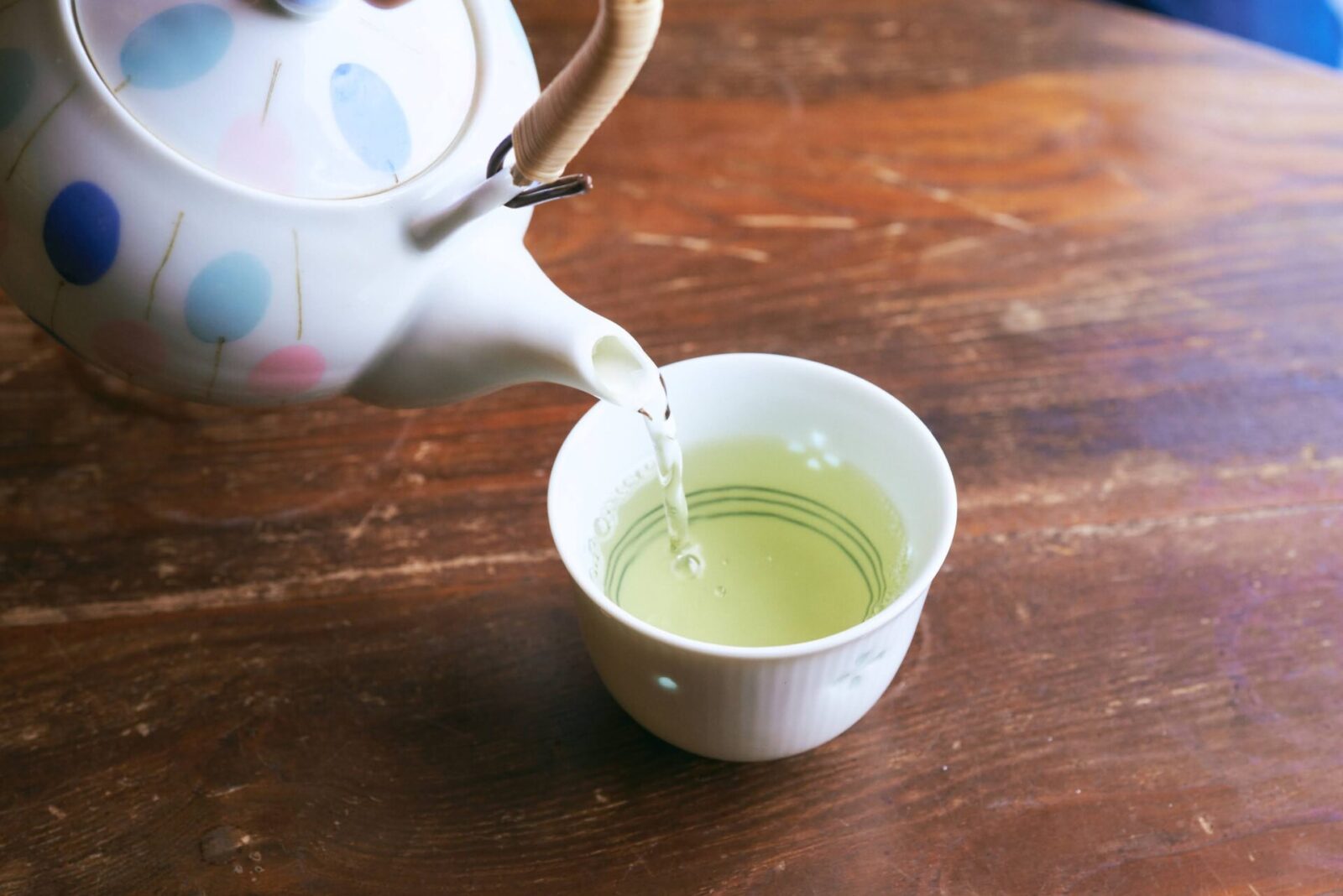
One unique characteristic of the Awabancha tea is that the taste, flavor and color changes with the farm that it was produced. This is because the lactic acid fermentation process changes with the local bacteria that is specific to each farm. Like wine, which tastes different depending on the climate of the region and winery, the “terroir” factor plays an important role in the final flavor.
Another factor that creates the different flavors is that each producer has a traditional yet unique way of processing the tea. For example, the length of time that the tea leaves are boiled before fermentation may differ at each farm.
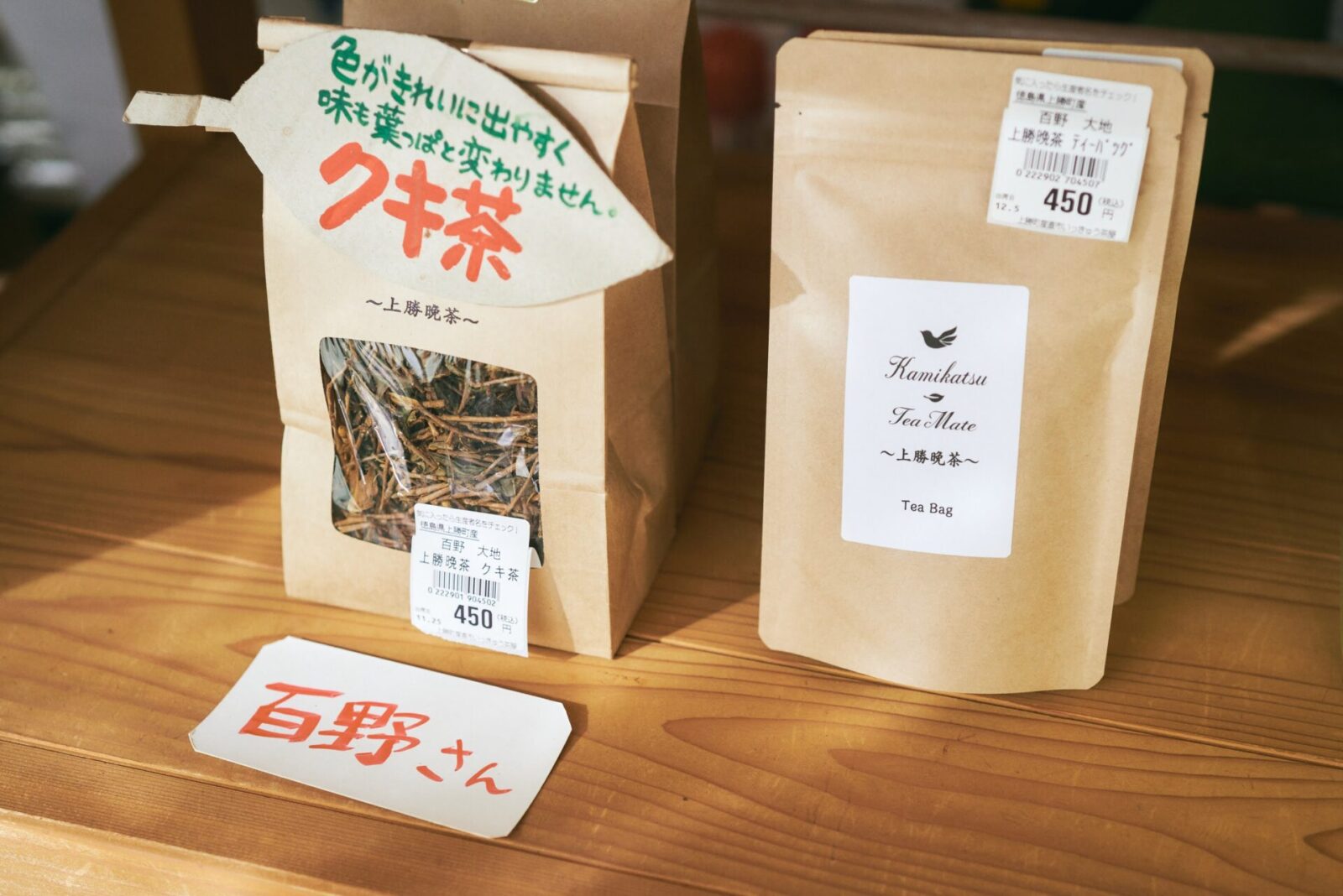
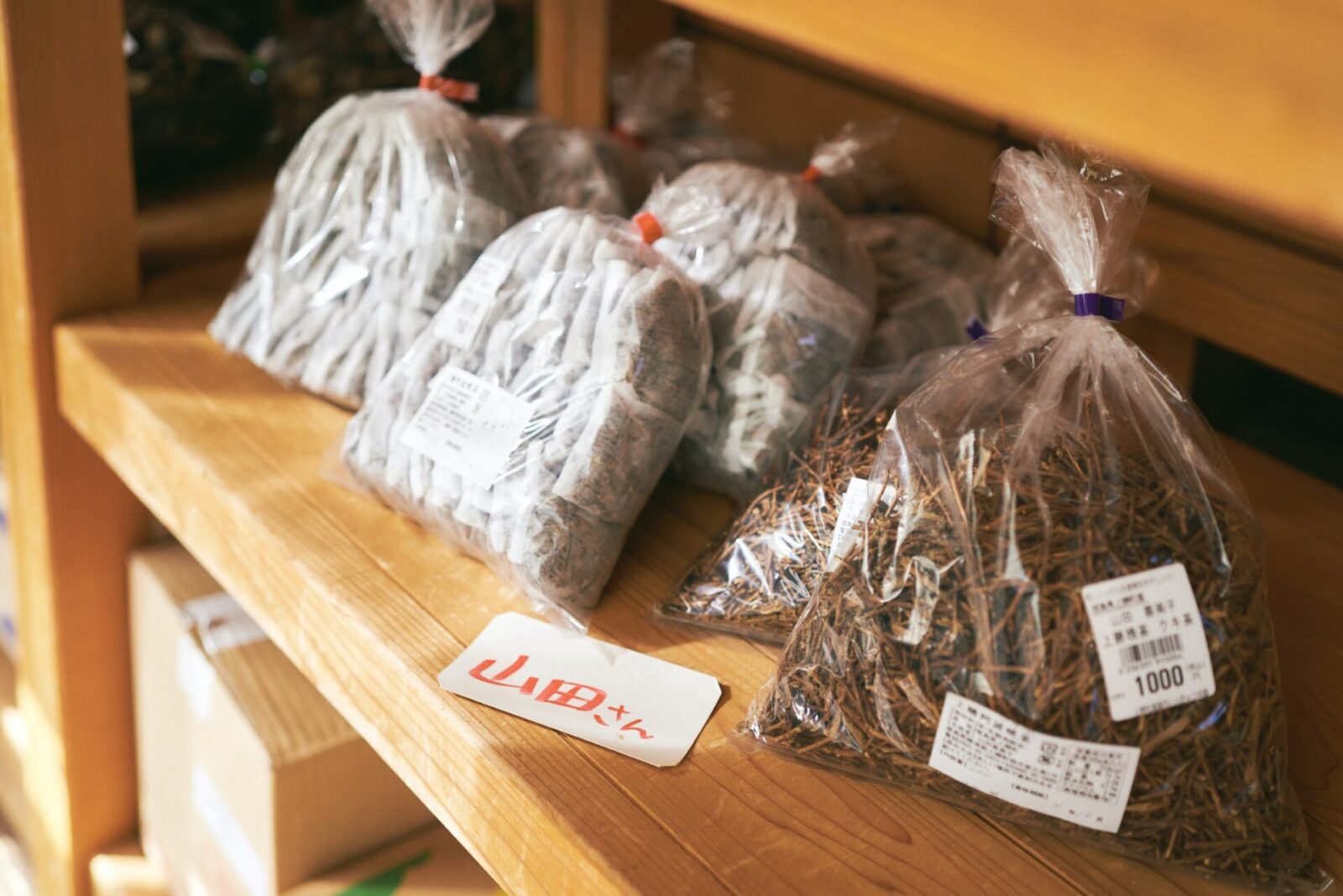
Organic, hand-made Awabancha tea
The first farmer we visited was Takahide Bando, who heads the organic foods maker Bando Farm. We talked to him while he showed us around his farm which covers an area about the size of the Tokyo dome.
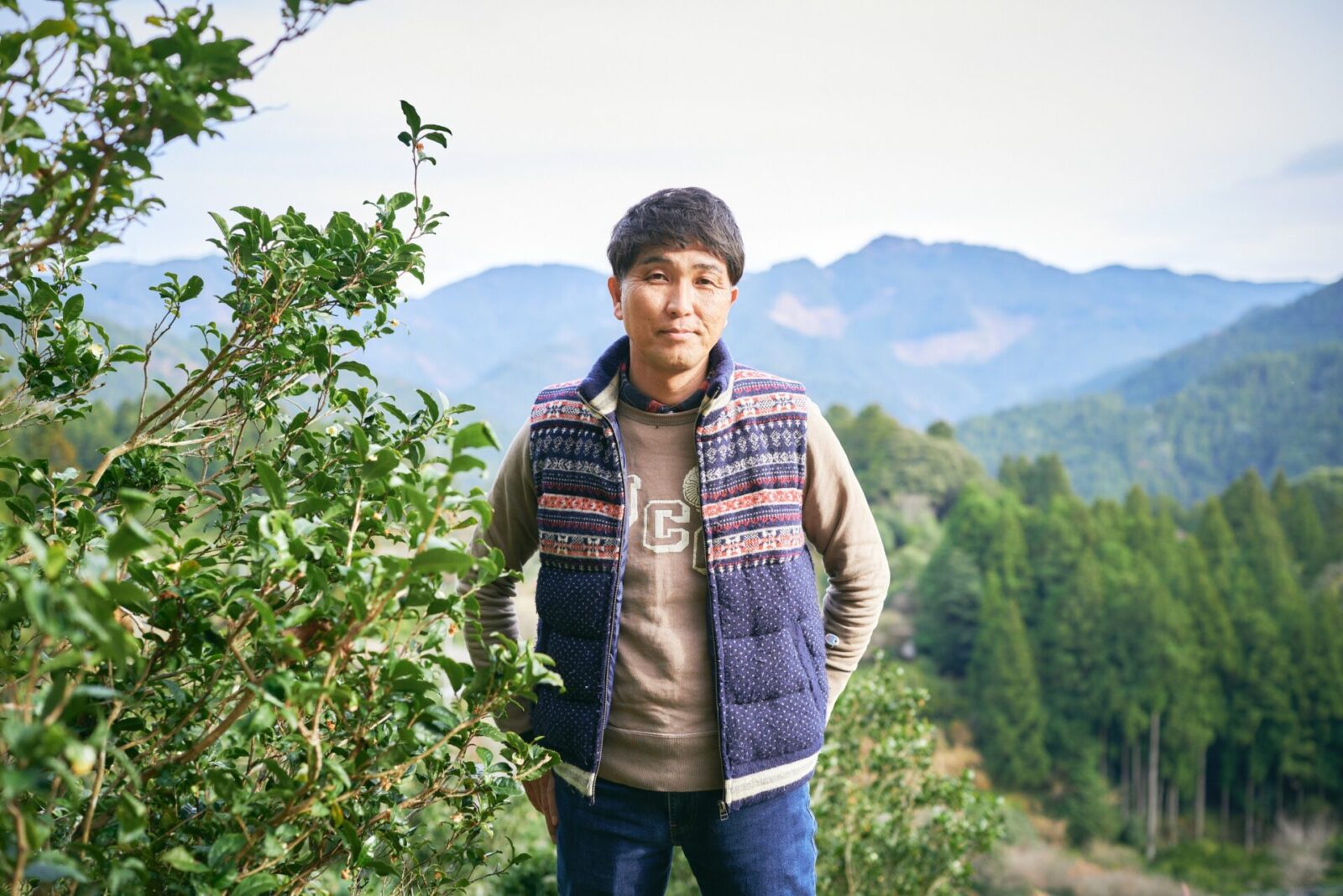
A large portion of the produce made at Bando Farms are citrus fruits such as yuzu, yuko, and sudachi, which are the local specialties of Kamikatsu Town. The tea trees are grown among the citrus trees throughout the fields.
Almost all of the steps to make the Awabancha tea are done by hand. Bando laughs as he says, “It takes a lot of work.” Even though it is very labor intensive, he says that he is committed to keeping the tradition of Awabancha tea production alive in this region.
Bando gave us a brief overview of the process of making Awabancha, starting from picking the leaves until the final processing of the tea.
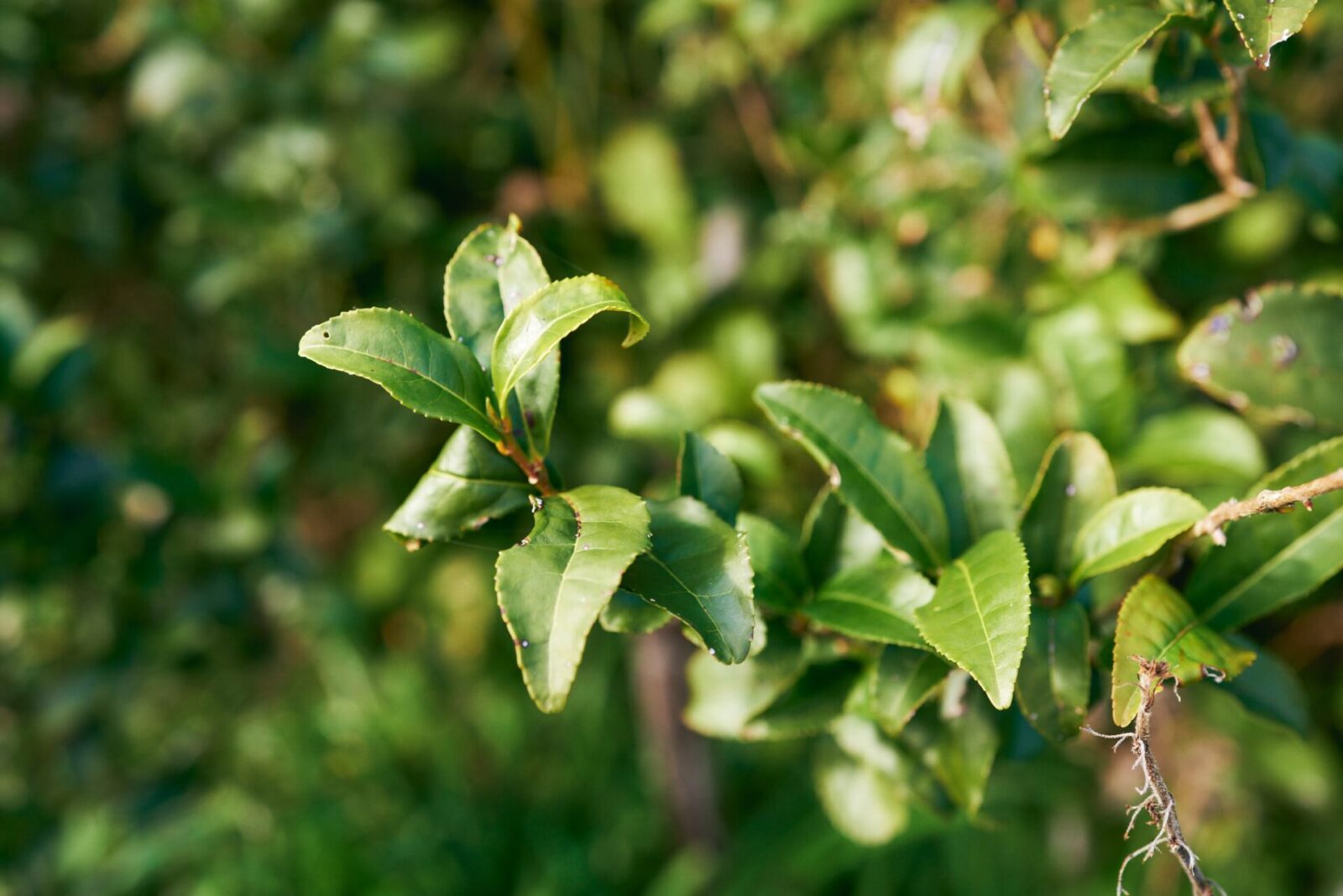
The time of harvest is later than that of most teas and is done between late July to August. Compared to new leaves, the thicker and more mature tea leaves have more nutrients and this helps activate the lactic acid fermentation.
The tea leaves are hand-picked by volunteers in the town.
Next, the harvested leaves are processed within a few days. The first step in processing is boiling the tea leaves in a giant pot. When the water comes to a boil, the tea leaves are put into the pot and left to simmer for some time. The time spent boiling the leaves influences the final flavor of the tea, but how does Bando decide on the length of boiling time?
“The length of time I boil is based on my intuition that comes from years of experience. The boiling water turns a certain color which I recognize as the right amount of time. The tea leaves boiled by my father and myself are slightly different so there is a slight difference in flavor. That is what makes Awabancha so interesting. I think it is similar to how people talk about how the beaujolais wine tastes different each year.”
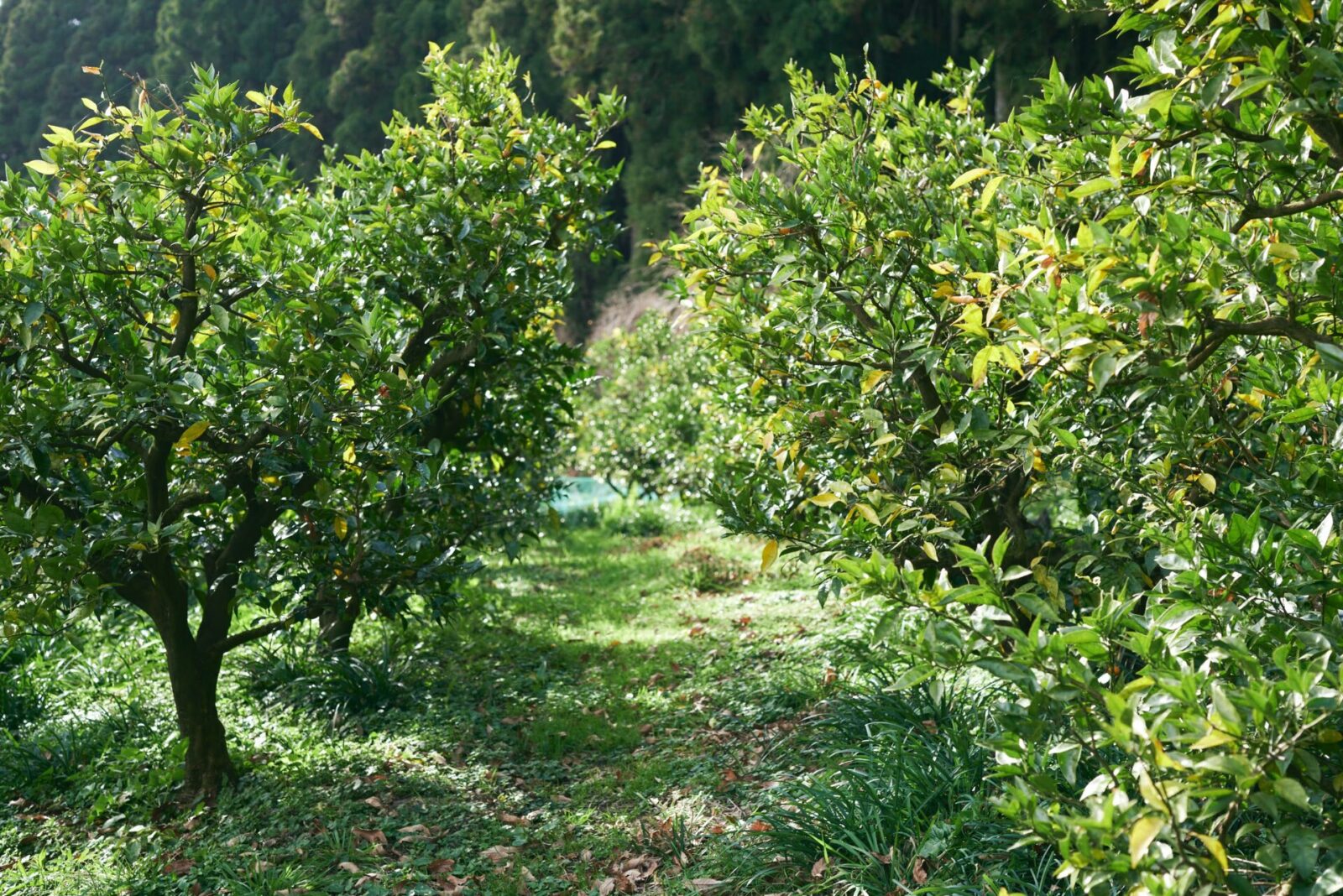
After the tea leaves are boiled, they are put in a tea grinder which applies pressure and rubs the tea leaves together. Intentionally scratching the surface of the tea leaves helps the fermentation process. This process of grinding the tea is the only step where a machine is used. In other words, all of the other processes are done by hand.
The final step is the fermentation process. The tea leaves that have gone through the grinder get put into a big wooden barrel. “The key is to pound the tea leaves down and remove all the air,” Bando explains.
A lid that is weighed down by a rock is put on the barrel and the water that the tea leaves were boiled in is poured on top to get all the air out. The tea leaves are left to soak for two weeks to one month. During this time, the lactic acid fermentation progresses slowly.
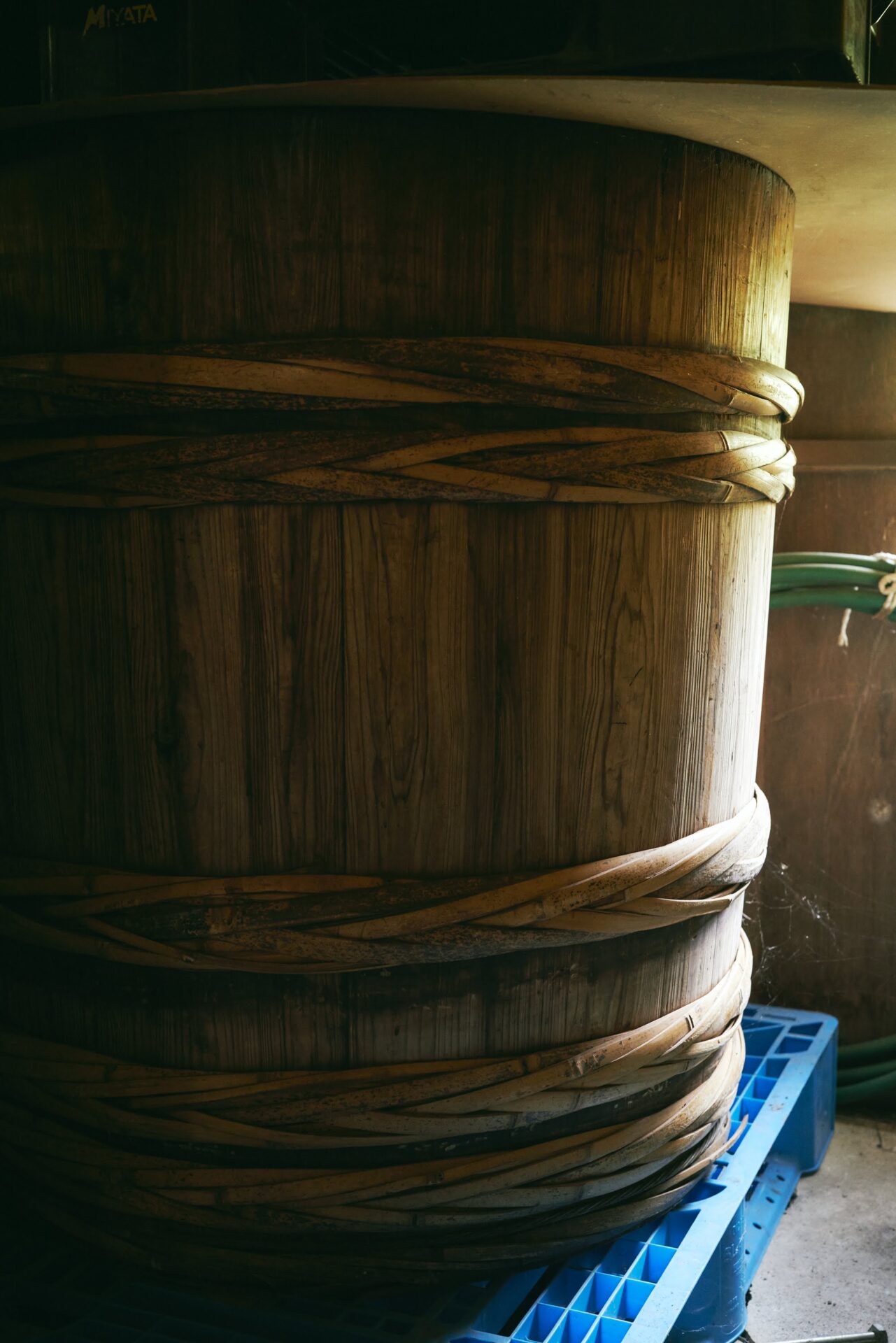
The final step that Bando is especially careful about is sun drying the tea leaves.
The soaked tea leaves are carefully spread out and dried for two to three days until it is completely dry. Bando is very careful about the weather because if the tea leaves get wet in the rain during this step, all the time and effort up to that point will be wasted.
Once the tea leaves are dried, the leaves and stems are separated. Then the tea is packaged and shipped out.
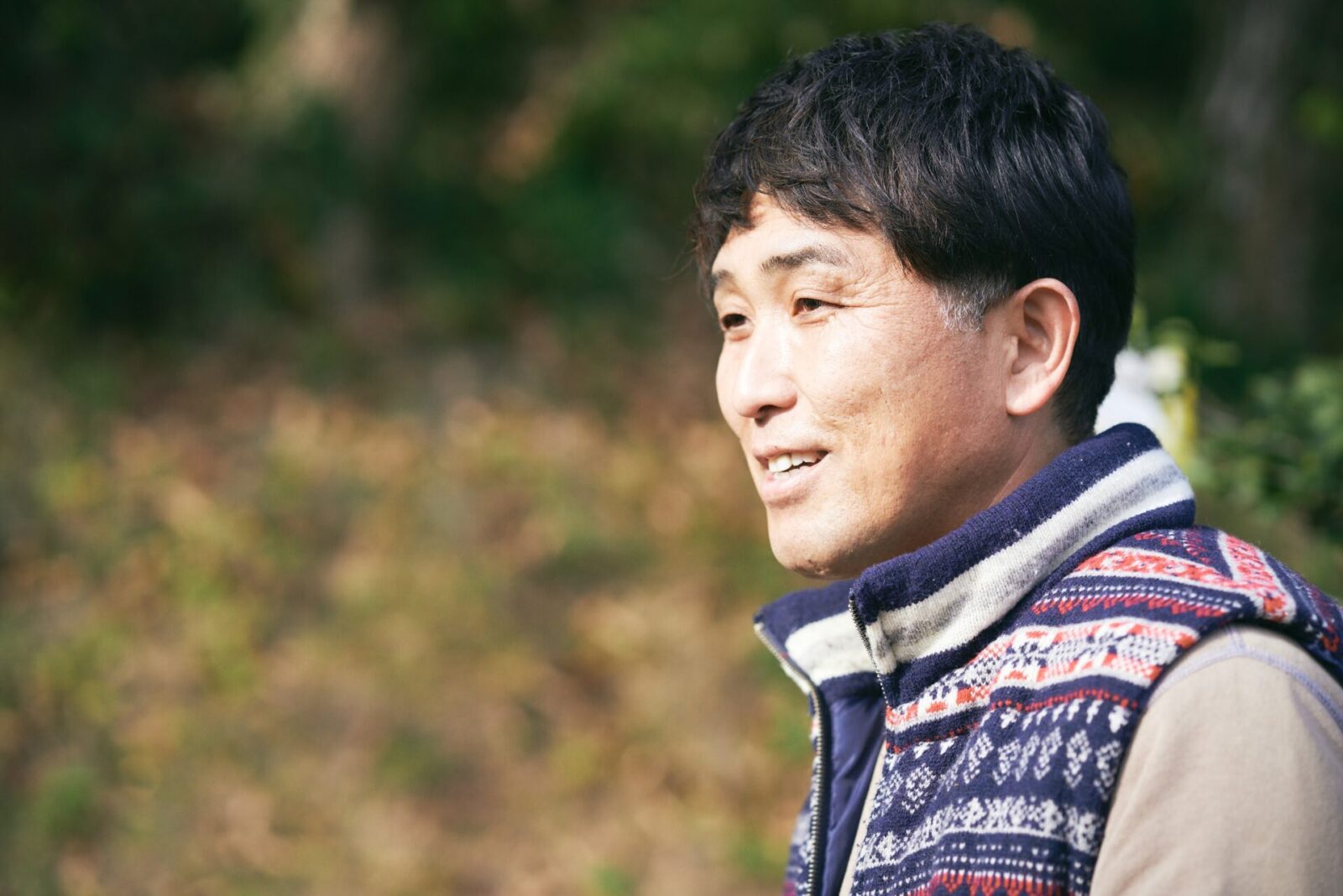
These processes must be carried out all at once within a few weeks and are very labor intensive when combined with the other work on the farm.
Even so, Bando explained why he continues to make Awabancha tea.
“The people of Kamikatsu Town have been drinking Awabancha tea on a daily basis for ages. I want to continue to provide the local people and my customers with this tea. It is a historic tradition of Kamikatsu and I want to continue that tradition.”
Visitors from Taiwan and Europe come to Bando Farm to buy the tea, and he also receives many inquiries from overseas. However, because there is only a limited supply, Bando prioritized his local customers who have been drinking the tea for generations. He says that only a small volume is available to overseas customers.
“Sometimes I think about how much easier my life would be if I quit making Awabancha tea. But as long as the local people continue to drink this tea, I cannot give up on making it.”
After talking to Bando, we could see why the Awabancha tea is called the “elusive tea.”
Sharing the “bancha tea” culture
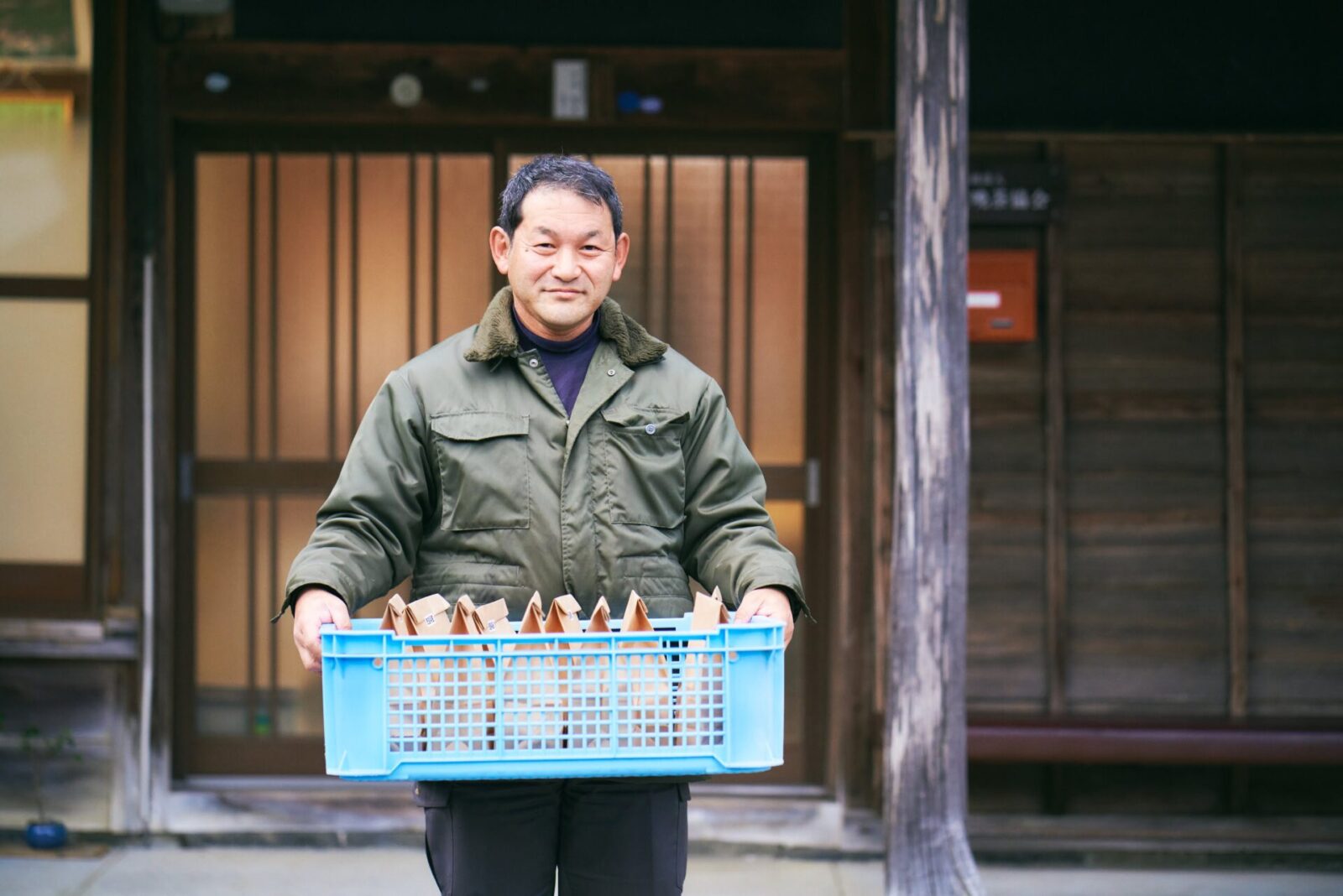
Hiroshige Takagi is another person who is working hard to pass on the tradition of Awabancha Tea in Kamikatsu. He is the chairman of the Kamikatsu Awabancha Tea Association and is in charge of promotion and event planning.
Takagi was born and raised in Tokushima before he moved to Kamikatsu Town. He learned how to make Awabancha tea from the previous head of Bando Farm (the father of Takahide Bando). “Making tea suited my personality and I decided that I wanted to make it my life’s work. The tea I make is similar in taste to the previous head of Bando Farm,” Takagi says.
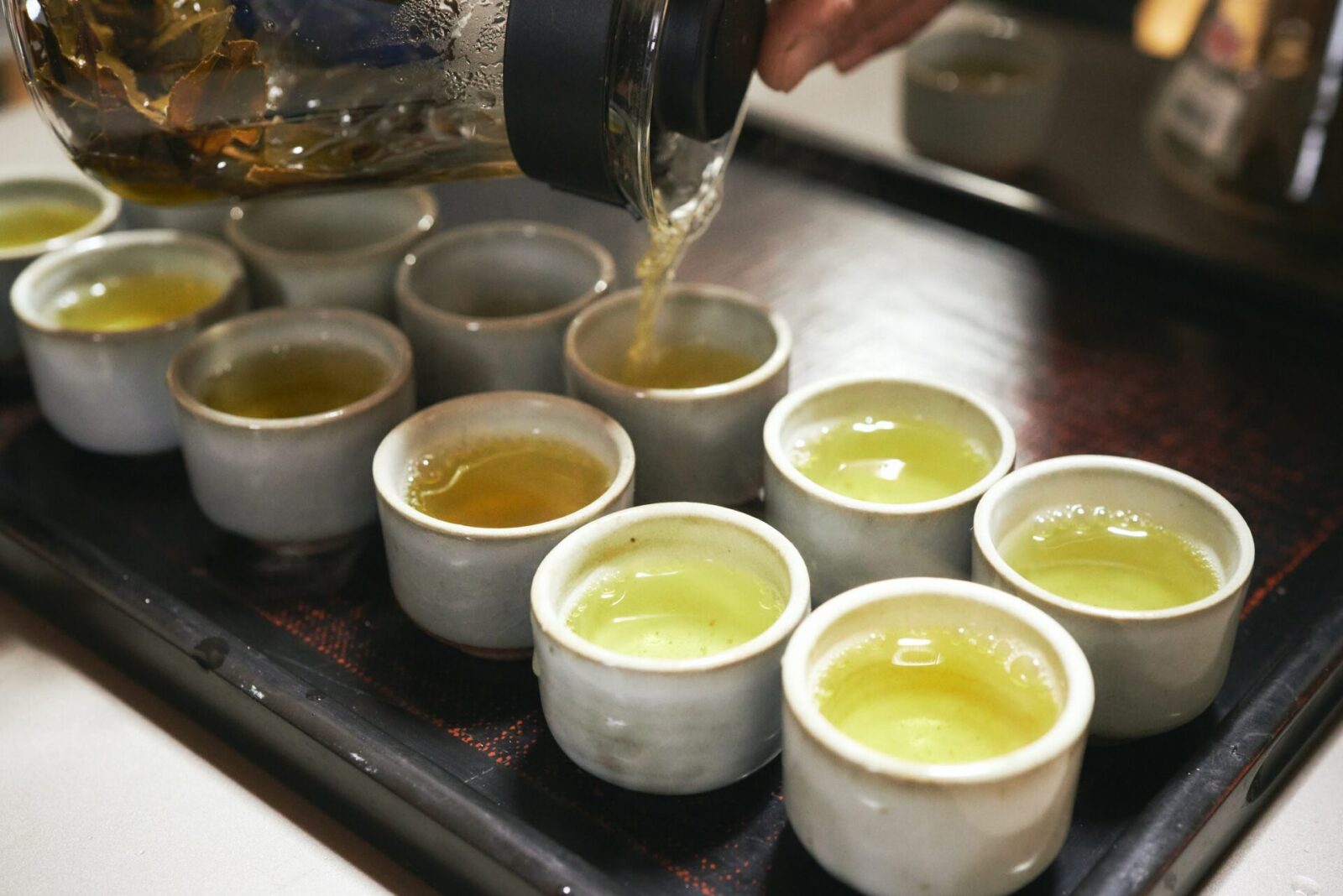
Takagi began growing a tea tree variety from Sayama City, Saitama, called “Sayamakaori” and mixed it with the native varieties that are indigenous to the region. Compared to the native varieties, “Sayamakaori” is more acidic and has a slight bitterness.
“I was the first to plant Sayamakaori tea trees in this land. I did a lot of research, but nobody really knows which variety of tea is best suited for lactic acid fermentation. Sayama is said to be the northernmost region where tea can be grown. In Shikoku, Kamikatsu is at a high altitude so considering the plant’s tolerance to cold, I thought the climate here will suit the Sayamakaori breed.”
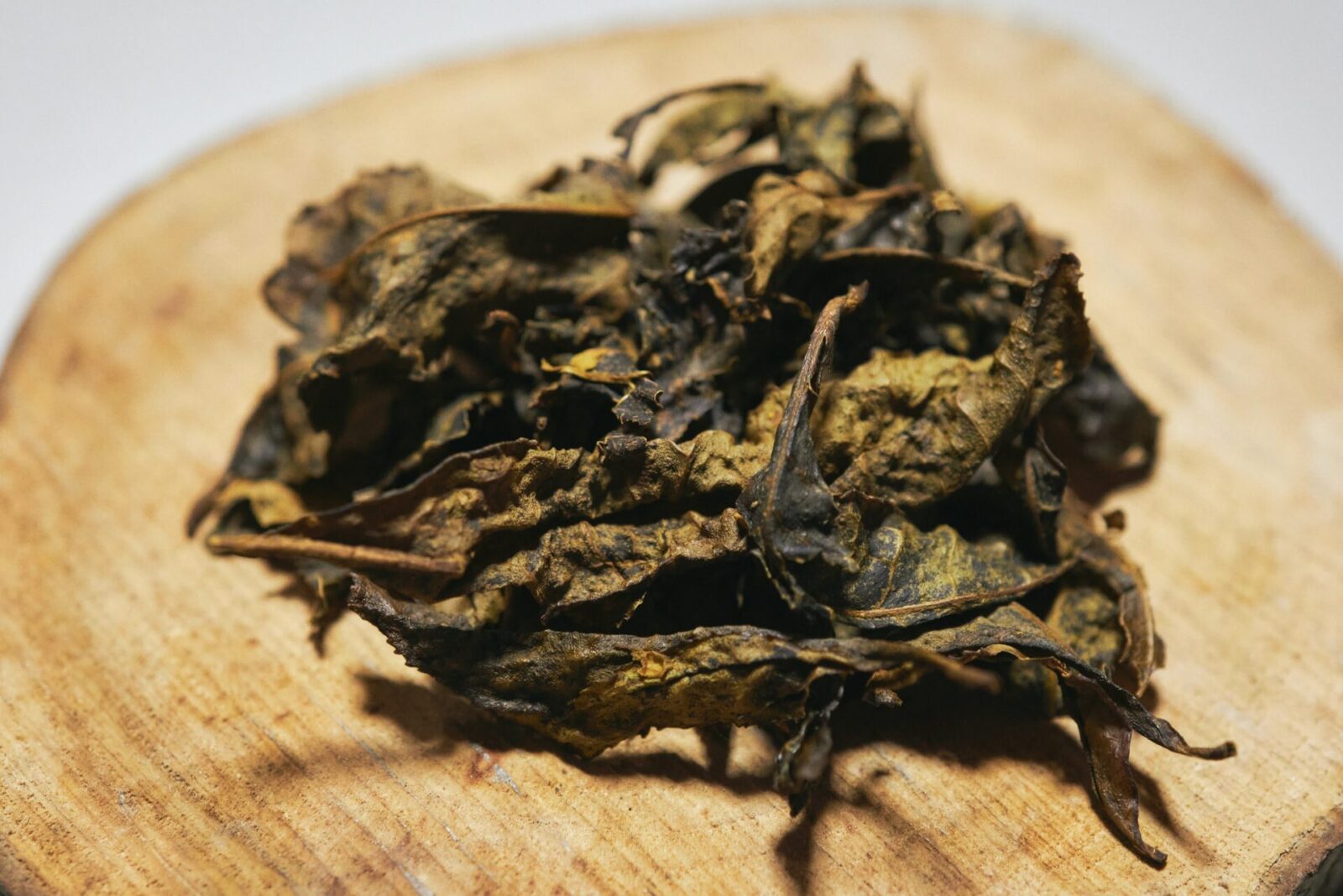
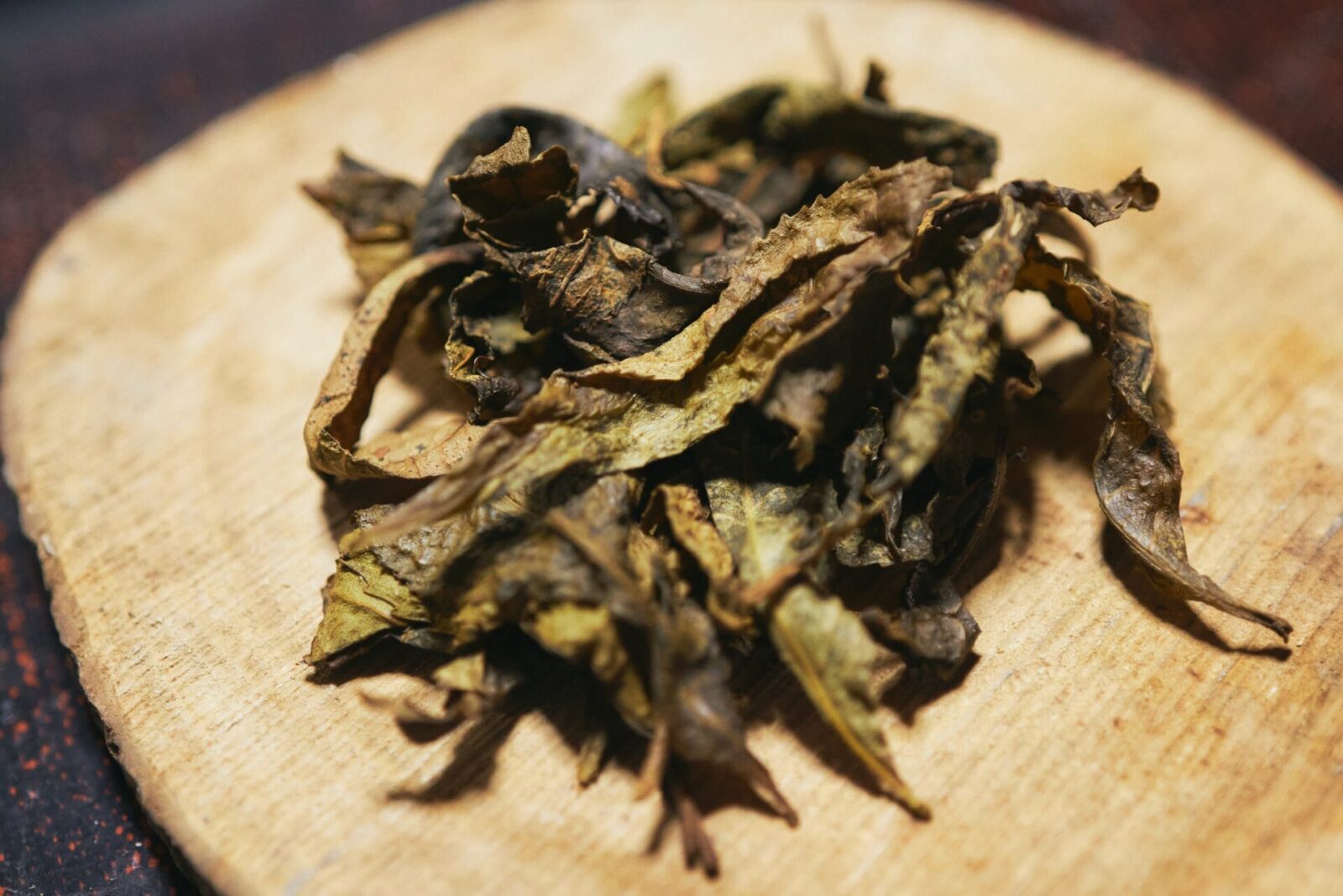
The biggest difference between green tea and Awabancha tea
We asked Takagi what the best way to enjoy Awabancha tea is. He laughed as he answered, “That’s a difficult question to answer.”
“With green tea, I think many people change the tea depending on the situation. In formal settings or when entertaining guests, people tend to choose a higher grade green tea or ‘gyokuro.’ With Awabancha tea, however, it’s always the same tea. Whether it is for drinking before meals, during meals, after meals, with friends or for special occasions, it’s always the same tea.”
“In other words, the characteristic of Awabancha tea is that it is a part of everyday life. This is why I see it more as a part of the culture rather than an agricultural product.”
Making Awabancha Tea into a business
As Takagi devoted himself to Awabancha tea, founded the Kamikatsu Awabancha Tea Association in 2018. The association aims to pass on the traditional techniques and traditions of Awabancha tea to future generations.
Takagi says that in order to realize this, they “need to establish Awabancha tea as a business.” Awabancha tea was originally a tea that was grown by farmers on a small scale to enjoy themselves in their own homes. Although they shared the tea with their neighbors, it was not until recently that people started to sell it as a product.
“In order to sustain this tea for future generations, we need to have farmers who produce it, people who sell it, and people who purchase and drink it. I founded the Kamikatsu Awabancha Tea Association because, first and foremost, I wanted to protect the people who produce the tea. In order to do that we obtained trademark rights to prevent counterfeit and inferior products from being sold. We have joined an insurance plan and we also plan events to promote Awabancha tea.”
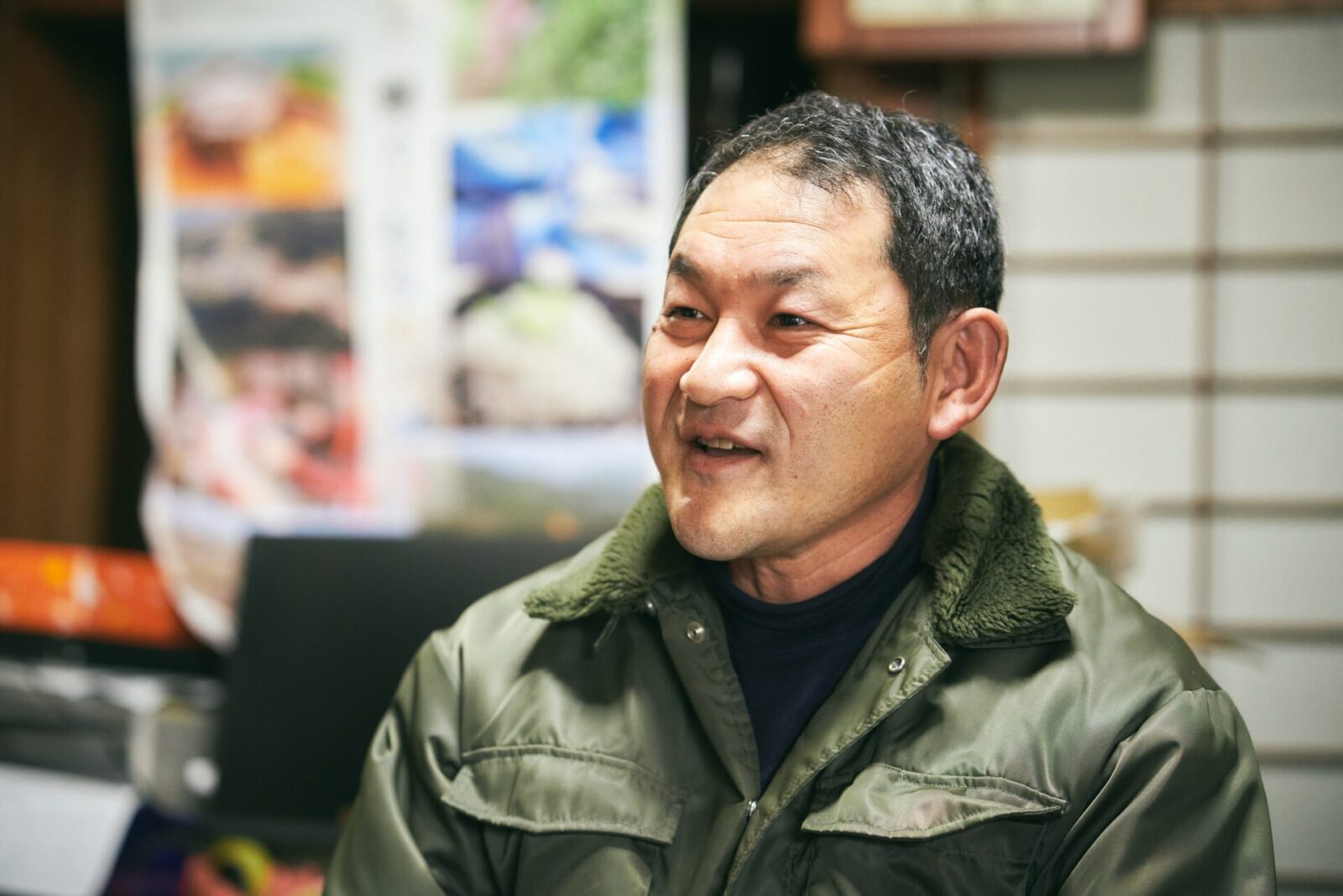
One such event is the Kamikatsu Awabancha Festival that is run mostly by young people who have moved into Kamikatsu Town.
“Most farmers have never spoken to the people who purchase the tea, and vice versa. We wanted to create an opportunity for farmers and the consumers to meet and interact.”
About ten Awabancha tea farmers participated and everyone tasted the various farmers’ traditional and unique tea. The event was a big success.
The flavor of the tea varies so much with each farmer that it is hard to believe they are from the same breed of tea leaves. In addition to the terroir factors that come from the local soil and airborne microbes, the other factors that go into the process of fermentation that are added by the producers themselves create the unique flavor and experience of each tea.

We asked Takagi how he plans to pass on the traditions of Awabancha tea to future generations.
“I think I am one of the younger producers of this tea. It takes a lot of physical labor, so the number of producers is decreasing each year. Nonetheless, I want to keep working on developing the Awabancha tea business. For some of the local people who have enjoyed this tea as a ‘family tea,’ this way of thinking is not always welcomed, but I believe someone has to act as the pioneer.”
“I think we need to rethink the way we distribute the tea leaves themselves. For example, one idea is to invite people outside the local region to participate in the production of Awabancha tea by becoming the owner of one barrel of tea. I think we need to challenge ourselves to incorporate different ways of doing business.”
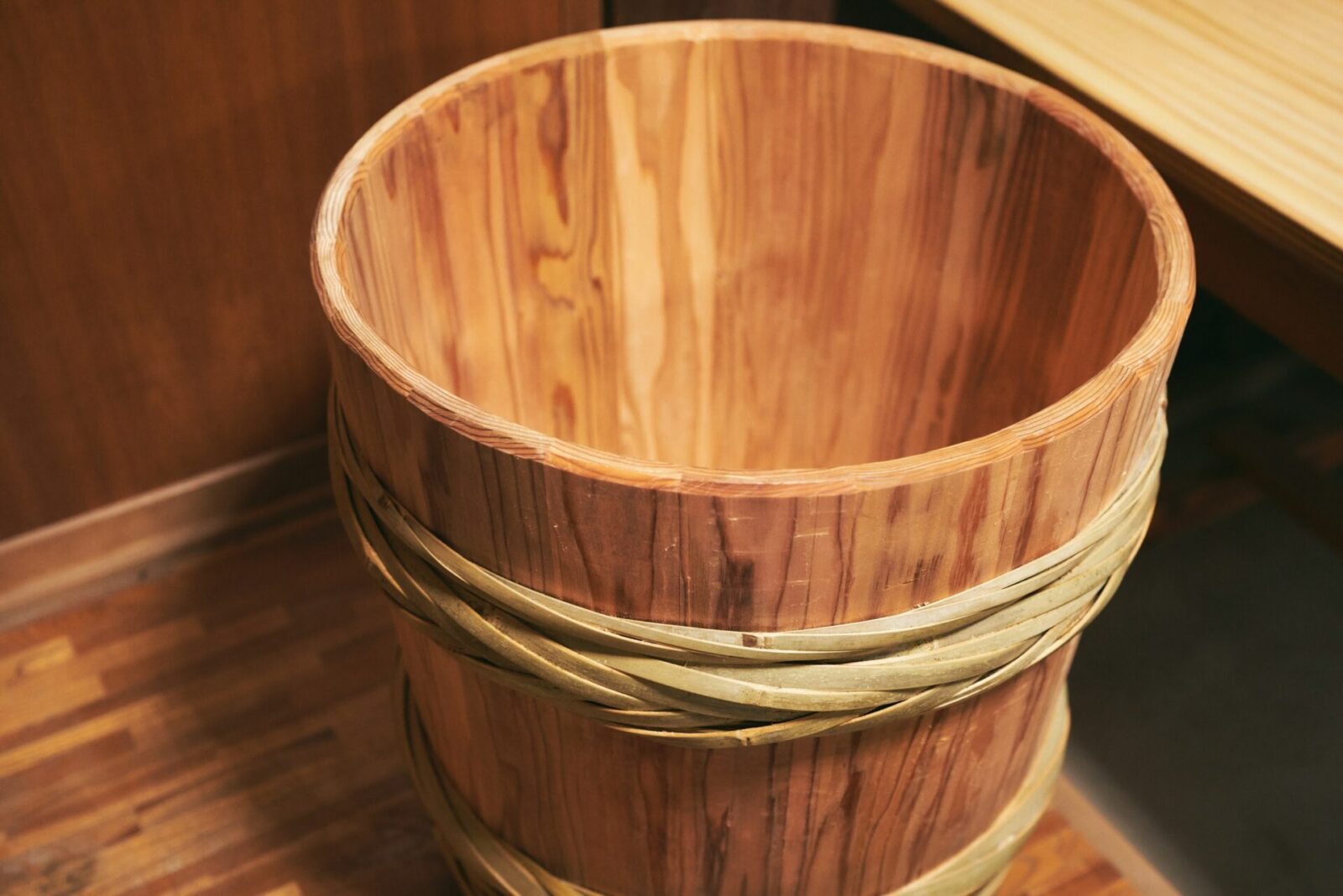
What keeps the “elusive tea” producers going
The Awabancha tea has been passed down through generations of Kamikatsu farmers and is deeply rooted in their daily lives. Behind the “elusive tea” was a mixture of the richness of the local climate and the culture and lives of the local people.
In 2021, the Kamikatsu Awabancha tea was designated as an Important Intangible Folk Culture Property. The fact that it is still made by hand using traditional methods was an important factor in its selection.
The reason why the producers of the tea continue to work so hard in making the Awabancha Tea comes out of their love for their local people. It is not an overstatement to say that the “elusive tea” exists because of the devotion of these farmers.
Their journey to take on new challenges will continue, with Awabancha tea being a natural part of their daily lives.
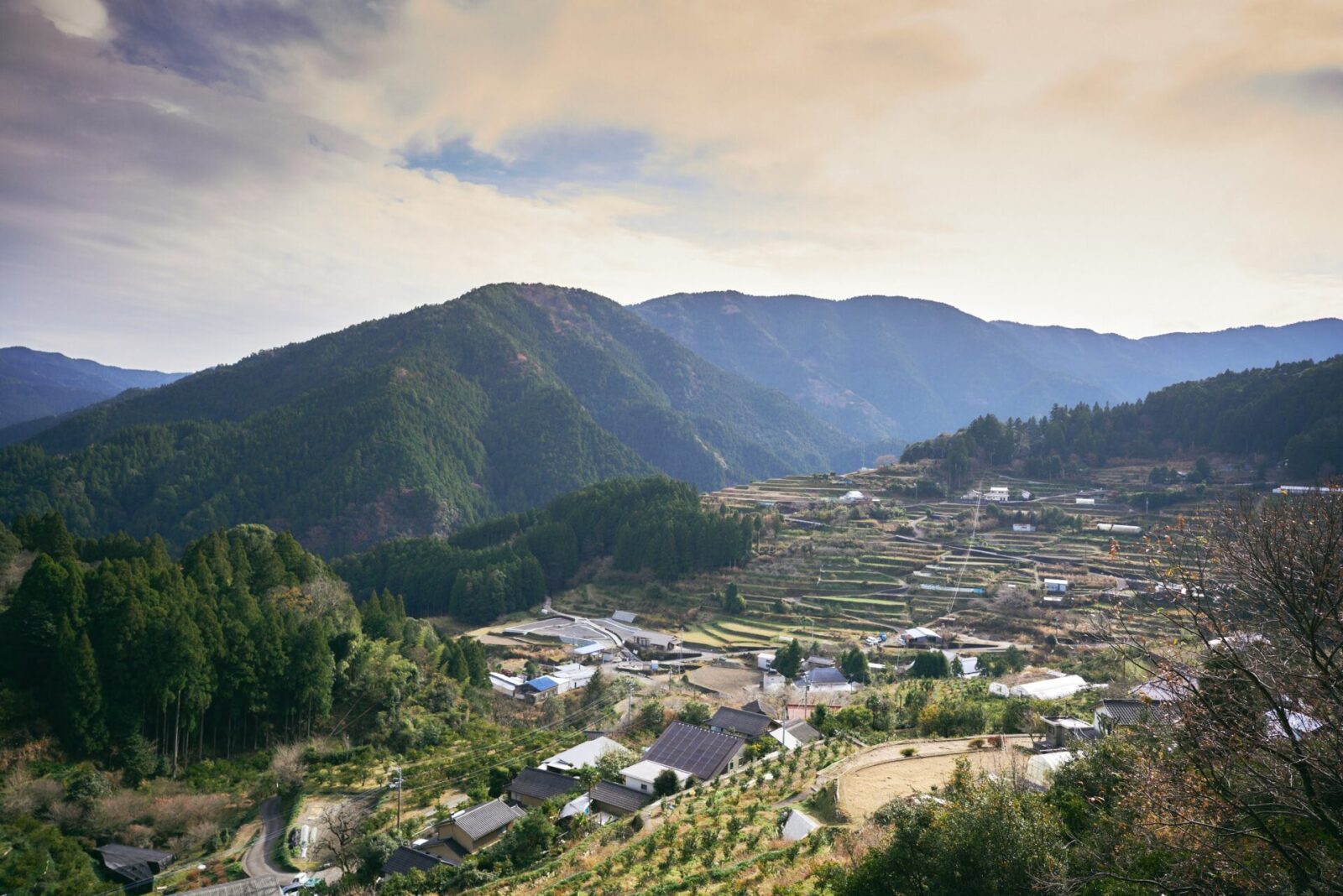
Photo:Umihiko Eto
Translation:Sophia Swanson
Special thanks:Ryusei Sato
Born in 1990, Nagasaki. Freelance writer. Interviews and writes about book authors and other cultural figures. Recent hobby is to watch capybara videos on the Internet.
Editor. Born and raised in Kagoshima, the birthplace of Japanese tea. Worked for Impress, Inc. and Huffington Post Japan and has been involved in the launch and management of media after becoming independent. Does editing, writing, and content planning/production.
